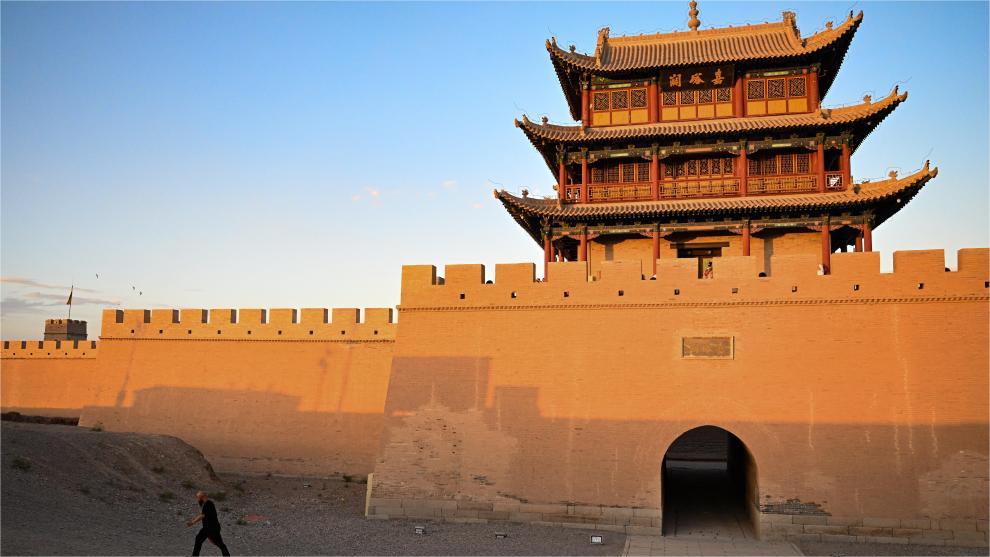Explainer: How China supports real economy with high-quality financial development
BEIJING, Dec. 9 (Xinhua) -- China's central financial work conference held in late October has made financial work arrangements for the current and future periods.
It is imperative to accelerate the building of a nation with a strong financial sector, comprehensively strengthen financial regulation, improve the financial system, optimize financial services, and effectively forestall and defuse financial risks, according to the conference.
The country's financial regulatory bodies have taken actions and measures to implement the work arrangements to better support the real economy and contribute to the overall economic and social development.
In recent exclusive interviews with Xinhua, heads of the nation's financial regulators, including the People's Bank of China (PBOC), China's central bank, the National Financial Regulatory Administration (NFRA), and the China Securities Regulatory Commission (CSRC), revealed their work plans that conveyed important messages to the market.
STEADILY LOWERING FINANCING COSTS
PBOC Governor Pan Gongsheng has pledged efforts to keep interest rates at an appropriate level and ensure that the financing costs of the real economy are lowered steadily.
The central bank will ramp up support for the real economy, guard against systemic financial risks and deepen financial opening-up, Pan said.
The central bank will focus more on cross-cyclical and counter-cyclical adjustments, and maintain reasonable credit and social financing growth, Pan added.
The PBOC will also increase support for major national strategies, key areas and weak links, and make full use of structural monetary policy tools to beef up support for small and micro businesses, as well as scientific and technological innovation, according to the central bank governor.
CAPITAL MARKET DEVELOPMENT
Noting that the capital market has unique advantages in serving the real economy, CSRC Chairman Yi Huiman said China will expedite building a safe, standardized, transparent, open, dynamic and resilient capital market.
To this end, the commission has planned a series of measures for implementation, including strengthening the supervision of the capital market, enhancing reforms and innovations, and building a high-performing team, Yi said.
He has vowed to further improve the registration-based initial public offering system and the multi-level capital market system, raise the quality of listed companies, and advance high-level institutional opening up.
"Going forward, we will focus on improving regulatory adaptability and pertinence to create a more favorable environment for the reform and development of the capital market," Yi said.
In 2022, more than 5,000 listed companies achieved a total added value of more than 18.23 trillion yuan (about 2.57 trillion U.S. dollars), accounting for 15.1 percent of China's GDP, and their R&D investment value accounted for 50 percent of the national R&D expenditure, according to Yi.
RISK MITIGATION
China is confident, well-positioned and capable of coping with various financial risks and challenges thanks to its sound long-term fundamentals, said NFRA head Li Yunze.
Noting that China's financial sector has functioned smoothly and demonstrated an overall strong resilience against risks, Li said that in the next step, efforts will focus on facilitating the reform and progress in de-risking for medium-sized and small financial institutions.
In this regard, Li has highlighted the importance of formulating targeted and precise measures such as making province-specific or bank-specific risk disposal plans.
Efforts are also needed to push forward structure optimization of the medium-sized and small banking institutions, as well as to guide asset management and non-banking institutions to stay in their lane and develop differentially, Li noted.
According to official data, the non-performing loan ratio of commercial banks stood at 1.61 percent by the end of the third quarter, while their provision coverage ratio, a measure of backstop against financial risks, came in at 207.89 percent, both within the reasonable range.
PBOC Governor Pan said the central bank will work to defuse risks of outstanding local government debt, control new debt strictly, and provide emergency liquidity to local governments with heavy debt burdens when necessary.
Meanwhile, CSRC's Yi said the commission will continue to adopt a "zero-tolerance" principle in cracking down on fraudulent issuance, financial fraud, market manipulation and other illegal activities, vowing to strengthen supervision capacity building and make sure no supervision vacuum occurs.
Photos
Related Stories
- IMF reiterates upward revision of China's growth forecast
- Explainer: Geneva-based int'l organizations upbeat about China's economic prospect
- Means of production prices mostly fall in China
- China's practice of humanomics in new era shows coprosperity between humanities, economy: report
- China capable of coping with various financial risks: official
Copyright © 2023 People's Daily Online. All Rights Reserved.









